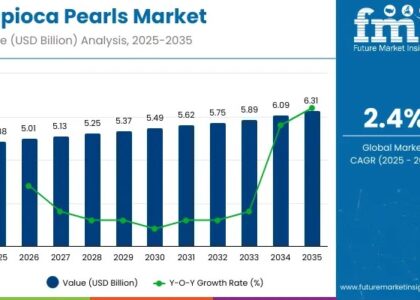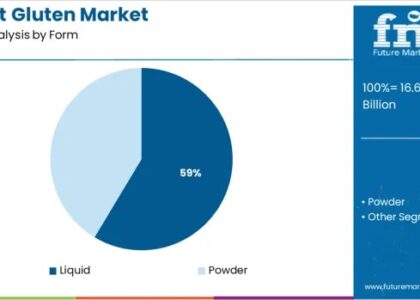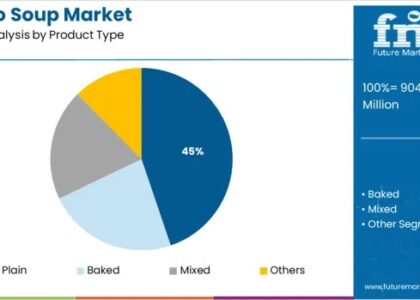
The global advanced mobile UX design services market is poised for significant growth, expanding from USD 1,387.8 million in 2025 to USD 2,673.4 million by 2035. This represents a CAGR of 6.8% over the forecast period from 2025 to 2035. The rising demand for superior digital experiences, driven by an increasingly mobile-first consumer base, is the key catalyst for this growth. Businesses across industries are recognizing the importance of intuitive, high-performance mobile interfaces that prioritize user satisfaction and functionality. The need to differentiate in a saturated app marketplace is prompting enterprises to invest more in UX (User Experience) design that is not only visually appealing but also conversion-focused and accessible across diverse device types and screen sizes.
Mobile UX design has evolved from being a cosmetic concern to a core business strategy. As digital experiences become the primary customer touchpoint, organizations are shifting toward mobile-centric design thinking to deliver seamless, user-friendly, and personalized interfaces. From e-commerce and fintech to healthcare and education, the demand for responsive, secure, and user-validated mobile applications is reshaping how UX design services are delivered. With increasing pressure to reduce bounce rates and increase user engagement, mobile UX design services now encompass research, usability testing, behavioral analytics, and ongoing optimization as part of a holistic digital product strategy.
Get Ahead with Our Report: Request Your Sample Now!
https://www.futuremarketinsights.com/reports/sample/rep-gb-566
Key Takeaways
The market for advanced mobile UX design services is expanding as organizations look to retain users and improve app performance through exceptional design. With growing competition in mobile apps, user interface simplicity, speed, and personalization have become crucial differentiators. Mobile-first design is no longer optional—it is a prerequisite for success in digitally savvy markets. As consumers demand faster load times, intuitive navigation, and immersive experiences, businesses are prioritizing UX from the earliest stages of development. This shift is particularly evident in sectors such as banking, e-learning, healthtech, and travel, where digital engagement metrics directly impact revenue and brand perception.
Additionally, as emerging markets witness exponential smartphone penetration, there is a growing need for UX designs tailored to diverse cultural contexts, language preferences, and accessibility needs. The integration of design systems, scalable UI frameworks, and voice/user gesture interactions are adding new dimensions to mobile UX services. The service scope is also expanding to include prototyping, animation design, real-time collaboration, and data-driven decision-making, all of which contribute to a robust and agile mobile UX strategy.
Emerging Trends in the Global Market
The global advanced mobile UX design services market is being reshaped by a wave of emerging technologies and consumer behavior shifts. One of the most notable trends is the incorporation of AI and machine learning into mobile UX design. Designers are leveraging AI-driven insights to create adaptive interfaces that evolve based on user interaction patterns. Predictive personalization and context-aware design are becoming standard features, especially in retail and entertainment apps.
Voice UI and gesture-based navigation are also gaining traction, reflecting the rise of hands-free interaction and wearable devices. Dark mode, haptic feedback, biometric integration, and micro-interactions are enhancing user engagement while reducing cognitive load. The adoption of progressive web apps (PWAs) and cross-platform design tools is enabling designers to deliver consistent experiences across Android, iOS, and other platforms. Additionally, inclusive and accessible design is being emphasized, as global regulations push for apps that cater to users with disabilities, ensuring equity in digital experiences.
Significant Developments in the Global Sector: Trends and Opportunities in the Market
In recent years, the UX services sector has evolved to address the end-to-end lifecycle of mobile products, from strategy and research to development and continuous improvement. Agencies are moving beyond wireframes and mockups to offer UX audits, user journey mapping, behavioral segmentation, and A/B testing services. Design thinking workshops, co-creation sessions, and design sprints have become integral components of mobile UX design engagements. With the growing influence of Gen Z and millennial users, who expect instant gratification and fluid design, businesses are capitalizing on these insights to deliver memorable, high-performing app interfaces.
Opportunities are emerging across B2B and B2C verticals, where mobile apps serve as both engagement platforms and transaction hubs. From personalized dashboards in SaaS applications to mobile-first CRM tools, UX design is enabling enterprise apps to mirror the intuitiveness of consumer-facing products. Meanwhile, the increased adoption of wearable devices and IoT-connected systems has opened new ground for UX innovation—pushing the boundaries of design beyond phones to smartwatches, AR/VR headsets, and automotive infotainment displays.
Recent Developments in the Market
Recent developments in the advanced mobile UX design services market highlight growing demand for integrated design and development offerings. Service providers are aligning with agile and DevOps methodologies to deliver iterative improvements and faster go-to-market cycles. Cloud-based design collaboration tools like Figma, Sketch, and Adobe XD have gained widespread popularity, enabling remote teams to collaborate in real time. The rise of no-code and low-code development platforms is also influencing how UX design integrates with backend systems, giving designers more control over interface logic and behavior.
Leading UX agencies and in-house design teams are investing in user research labs, heat mapping software, and emotional response tracking to refine mobile experiences. Design systems are being codified to ensure consistency across products, while reusable UI components are reducing development time and cost. With data privacy becoming a key concern, UX designers are also focused on transparent data flows, user consent screens, and trust-based interaction patterns. These developments underline the growing complexity and strategic importance of UX design in driving digital transformation.
Thorough Market Evaluation: Full Report
https://www.futuremarketinsights.com/reports/advanced-mobile-ux-design-services-market
Competition Outlook
The advanced mobile UX design services market is characterized by intense competition and rapid innovation. Both boutique design studios and global digital agencies are vying for market share by offering specialized services, scalable teams, and vertical-specific expertise. Client expectations are rising, with demand for quick turnarounds, measurable ROI, and high-quality design output. Service providers are responding by building interdisciplinary teams that combine UX, UI, behavioral science, motion design, and front-end development to deliver holistic solutions.
Key players
Major players in the market include IDEO, Fjord (Accenture Interactive), Frog Design, Toptal, IBM iX, Zco Corporation, Clay Global, Ramotion, ustwo studio, and R/GA. These firms are known for their human-centric design methodologies, global clientele, and proven track records in executing award-winning mobile design projects. As enterprise budgets for digital transformation continue to grow, these companies are expanding into new geographies and sectors, strengthening their foothold through M&A activity and tech partnerships.
Key Segmentations
The market can be segmented by service type, platform, application, and end user. By service type, the segments include UX research, interface design, usability testing, and prototyping, with interface design leading due to its central role in mobile app delivery. By platform, the market covers Android, iOS, and cross-platform, with cross-platform services growing rapidly due to the need for consistent design across devices. Application segments include retail, healthcare, banking, education, travel, and media, with retail and fintech leading adoption. End users span startups, SMEs, and large enterprises, with startups showing strong demand for MVP-level UX services and enterprise clients investing in long-term design transformation.
About Future Market Insights (FMI)
Future Market Insights, Inc. (ESOMAR certified, recipient of the Stevie Award, and a member of the Greater New York Chamber of Commerce) offers profound insights into the driving factors that are boosting demand in the market. FMI stands as the leading global provider of market intelligence, advisory services, consulting, and events for the Packaging, Food and Beverage, Consumer Technology, Healthcare, Industrial, and Chemicals markets. With a vast team of 400 analysts worldwide, FMI provides global, regional, and local expertise on diverse domains and industry trends across more than 110 countries.
Contact Us:
Future Market Insights Inc.
Christiana Corporate, 200 Continental Drive,
Suite 401, Newark, Delaware – 19713, USA
T: +1-845-579-5705
For Sales Enquiries: sales@futuremarketinsights.com
Website: https://www.futuremarketinsights.com
LinkedIn| Twitter| Blogs | YouTube





